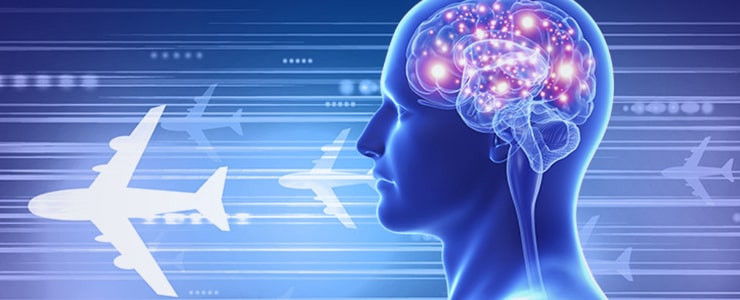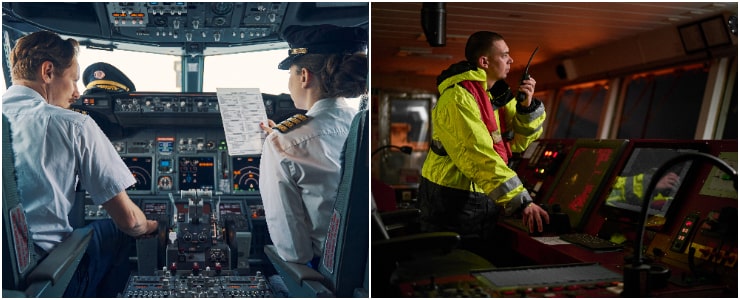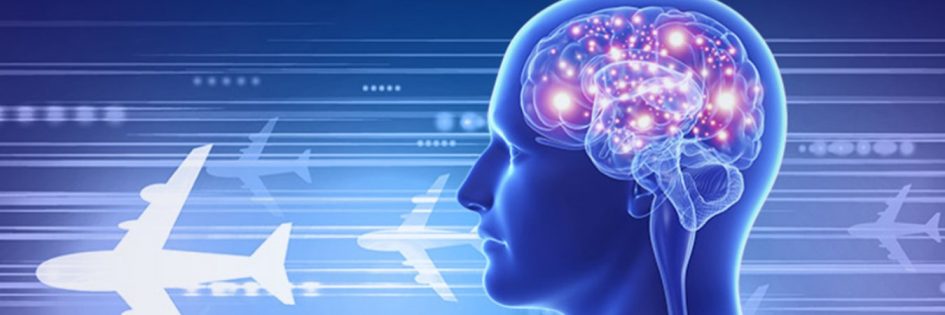Role of Human Factor in Aviation: We often hear aviation professionals say that the sky is their home, but its complexities are just as vast.
In the aviation industry, where split-second judgments and precision are vital, the lives of hundreds of people, flying thousands of feet above ground, depend not only on advanced technology and strict procedures but also on the complex interplay of the human mind and body. Amidst the peaceful cockpit and busy air traffic control centers, the balance between technology and human factor in aviation shapes our skies.

The psychological and physical demands faced by pilots and crew, as well as ergonomic factors, are a crucial part of aviation. These human factors in aviation play into decision-making and are interwoven with the technology driving contemporary aviation. In aviation, human factors include the psychological, physical, and ergonomic factors that affect performance. Human factors are closely intertwined with aviation technology. These range from decision-making to the physical demands placed on pilots and crew.
let’s delve deeper into each point regarding the human factor in aviation:
Human Factor in Aviation Safety
1. Pilot and Crew Performance

Decision-making:
Pilots and crew members constantly make decisions that affect flight safety. They assess weather conditions, manage fuel consumption, and handle unexpected scenarios like mechanical issues or air traffic congestion. Human Factor in aviation safety such as experience, training, and cognitive abilities greatly influence the quality of these decisions.
Problem-solving and Adaptability:
When faced with challenging situations, pilots and crew must quickly assess, troubleshoot, and adapt their plans. Their ability to navigate unforeseen circumstances is crucial in ensuring safe outcomes.
Situational Awareness:
Maintaining a high level of situational awareness—understanding the aircraft’s position, the environment, and other aircraft—is pivotal. This awareness allows them to anticipate potential risks and take proactive measures.
Latest Posts
- Travel Agent Checklist for Seamless Travel Bookings- Important List for You
- Travel Agent Training for Beginners: A Comprehensive Guide
- Find The Best Area to Stay in Washington, DC: 4 Ideal Locations
2. Crew Resource Management (CRM)

Teamwork and Communication:
Effective communication and teamwork among crew members are essential. They coordinate tasks, share critical information, and collaborate seamlessly to ensure safe and efficient operations. Clear communication is one human factor in aviation safety that prevents misunderstandings that could lead to errors.
Leadership and Decision Distribution:
Encouraging a culture where every team member feels empowered to speak up and contribute to decision-making fosters a supportive environment. Leaders distribute responsibilities and encourage input from all members, improving overall decision quality.
3. Human-Centered Design

Interface Design:
Cockpit interfaces, control panels, and other aviation systems must be designed with user experience in mind. Intuitive layouts, clear indicators, and ergonomic designs reduce the likelihood of errors caused by confusion or difficulty in operating equipment.
Training and Familiarization:
Training programs help pilots and crew members become acquainted with new systems or technologies. Familiarization with these interfaces ensures that they can navigate through various functionalities efficiently.
Human Factor in Aviation Maintenance

4. Maintenance Crews
Attention to Detail:
Maintenance crews follow stringent procedures to inspect, diagnose, and rectify issues with aircraft. Their attention to detail is critical in identifying potential problems before they escalate.
Adherence to Procedures:
Strict adherence to maintenance protocols ensures that aircraft are safe for operation. Following checklists and established guidelines reduces the likelihood of oversights or errors during maintenance.
5. Training and Skill Development

Continuous Learning:
Aviation professionals undergo regular training to keep abreast of new technologies, regulations, and best practices. Ongoing education and simulations help them refine their skills and stay prepared for diverse scenarios.
Scenario-Based Training:
Simulating real-world scenarios during training allows pilots and crew members to practice handling emergencies or challenging situations in a controlled environment. This hands-on experience enhances their preparedness.
Latest Posts
- Travel Agent Checklist for Seamless Travel Bookings- Important List for You
- Travel Agent Training for Beginners: A Comprehensive Guide
- Find The Best Area to Stay in Washington, DC: 4 Ideal Locations
6. Error Management

Reporting Culture:
Creating an environment where reporting errors is encouraged rather than punished is crucial. When errors occur, understanding their root causes helps in implementing preventive measures to avoid similar incidents in the future.
7. Adaptation to Automation

Supervisory Role: With the increasing reliance on automated systems, human operators need to supervise these systems. They monitor performance, intervene when necessary, and possess the skills to take control in case of system malfunctions or unexpected events.
Understanding and optimizing the human factor in aviation involves a holistic approach that considers human capabilities, limitations, and interactions within the aviation system, ultimately aiming to enhance safety, efficiency, and reliability in air travel.
Human Factor in Aviation FAQS
1. What role does crew resource management (CRM) play in aviation?
CRM emphasizes effective teamwork, communication, leadership, and decision-making among crew members. It’s crucial in preventing errors, managing crises, and ensuring seamless operations by fostering a collaborative and supportive environment within the cockpit and among the crew.
2. How does human-centered design impact aviation?
Human-centered design focuses on creating intuitive interfaces and systems within aircraft. Clear and user-friendly designs reduce errors caused by confusion or misunderstanding, enhancing overall safety and efficiency in aviation operations.
3. What are the challenges of human factors in aviation?
Challenges include managing fatigue and stress among aviation professionals, adapting to rapidly evolving technology and automation, maintaining situational awareness, mitigating human error, and ensuring effective communication and coordination within the crew.
4. How do aviation professionals manage human factor-related challenges?
Aviation professionals manage these challenges through comprehensive training programs that address fatigue management, decision-making skills, CRM, and adaptation to new technologies. Encouraging a reporting culture for errors and incidents fosters a learning environment to prevent recurrence.
5. Why is error reporting important in aviation?
Error reporting in aviation is crucial for identifying system weaknesses, understanding human error patterns, and implementing preventive measures. It helps in improving safety standards and preventing future incidents by addressing root causes.
6. What is the future of human factors in aviation?
The future involves integrating advanced technologies, further enhancing training programs, and refining human-machine interfaces. Balancing the increasing role of automation with human oversight will remain pivotal in ensuring safety and efficiency in aviation.





